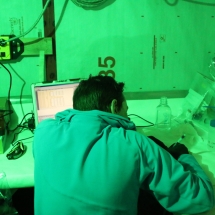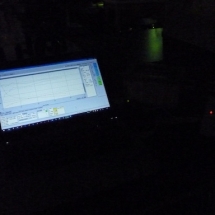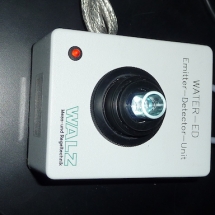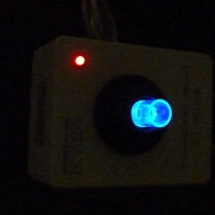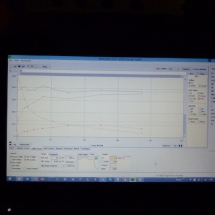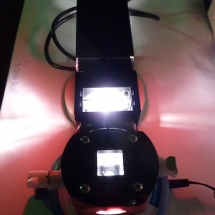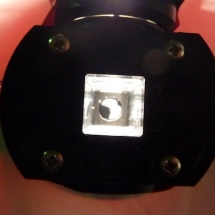How to assess the photosynthesis of sea-ice microalgae?
Sea-ice microalgae are unicellular organisms that can convert the solar light energy into chemical energy for producing organic matter via a complex physiological process known as photosynthesis. Together with the ones that live free in the water column (‘phytoplankton’), they are the so-called primary producers of the Arctic Ocean, and they support the whole Arctic food-web up to the ultimate consumers, i.e. polar bears and humans. The great majority of sea-ice algae is composed of brownish microalgae named diatoms. When they start to flourish (usually in May), they are so concentrated that one can eye-observe a thin brown ring at the ice bottom. Indeed, most of the sea-ice microalgae live in the very last ice centimeter in direct contact with the sea water. Because of the ice thickness and snow cover on top of it, sea-ice diatoms grow in an extremely low light environment. In order to preserve their photosynthetic activity, their natural low light environment needs to be maintained during coring, harvesting of the ice portion of interest, and analysis. Also, work in nearly complete darkness (i.e. with green very low energetic light) is essential. Such working environment is as well necessary for studying the photosynthesis of Arctic phytoplankton.
The photosynthetic activity and photoacclimation of sea-ice diatoms can be assessed via specific light-response protocols (RLCs-Rapid Light Curves) that allow building photosynthetic versus light curves (P vs. E curves). RLCs are performed using a so-called PAM-fluorometer that records changes in the natural fluorescence of chlorophyll pigments which is emitted by diatom cells when they are exposed to different light intensities. Additionally, for sea-ice diatoms, we use a blue light (440 nm) version of the PAM-fluorometer because the bottom-ice environment is very much enriched in blue radiations. The other main technical specificities of our approach, i.e. the shortness of RLCs (~ 1 min) as well as the small size of the PAM-fluorometer, allow the multiplication of measurements in an afternoon (sampling occurs in the morning) directly at the ice camp on fresh ice and water samples. In parallel to RLCs, samples are frozen to further analyze photosynthetic proteins and pigments, and especially photoprotective carotenoid (xanthophylls) content. Complementary light-response protocols (i.e. NSLCs, non-sequential light curves) using specific lighting set-ups are used in the lab the following day of sampling. NSLCs decipher the intensity and time kinetics of photoprotection of sea-ice diatoms coupling chlorophyll fluorescence (i.e. the non-photochemical quenching, NPQ), xanthophylls and photosynthetic protein analysis.
Other specific features of the Arctic light environment (light spectrum and extreme seasonal day length variations), and its impact on the ecophysiology of Arctic diatoms is and will be an important part of Takuvik’s research in the years to come (HFSP and Sentinel North programs).


